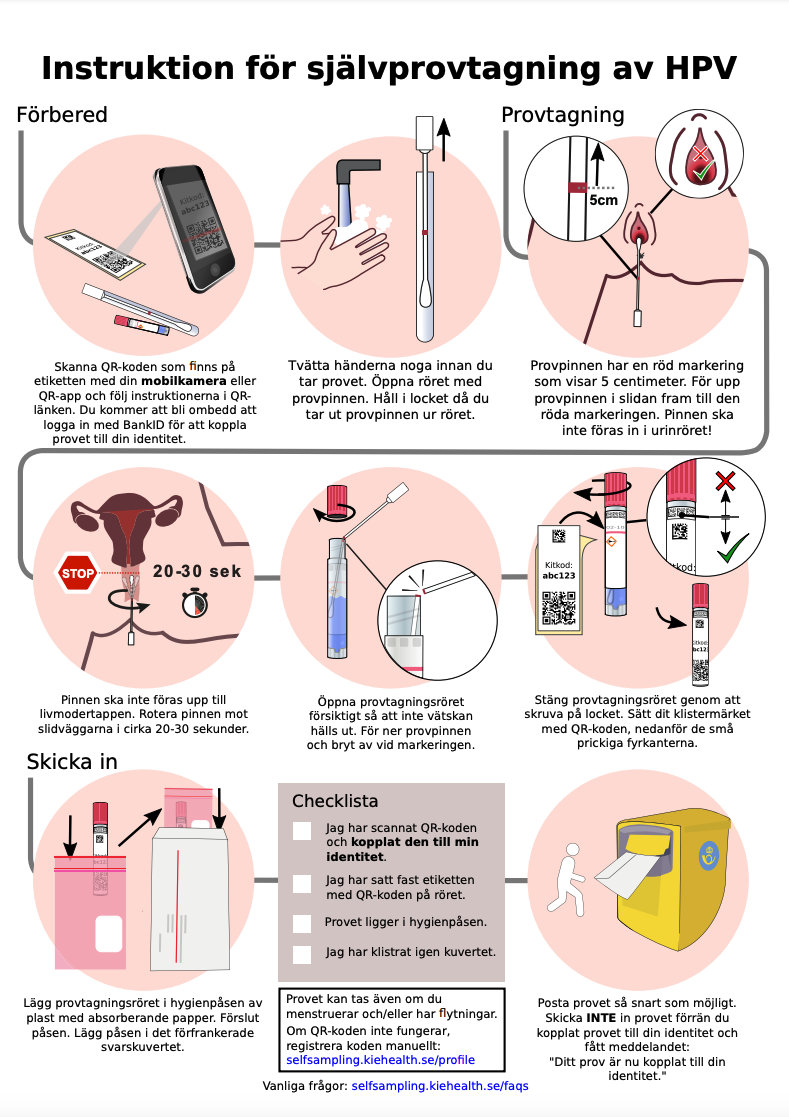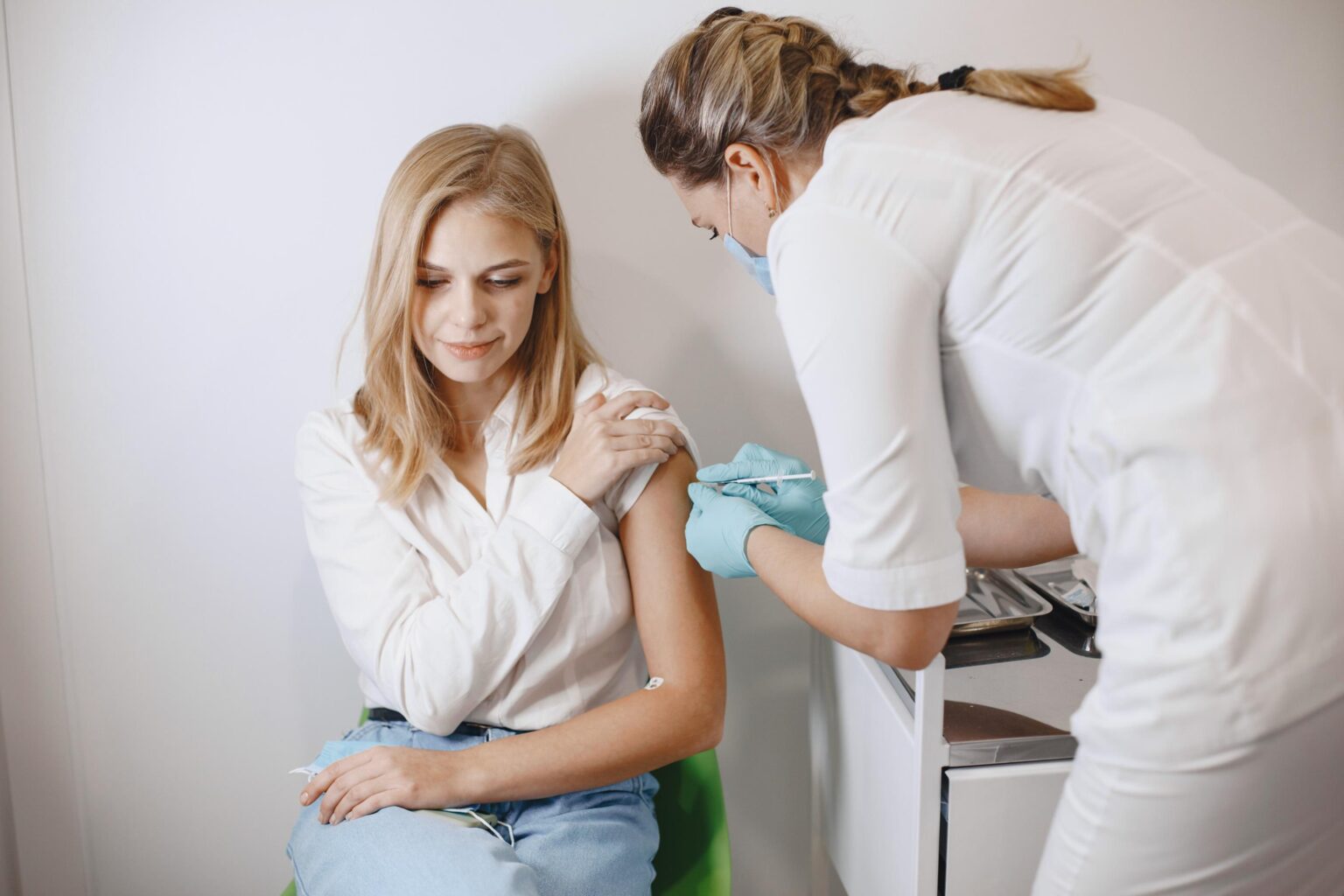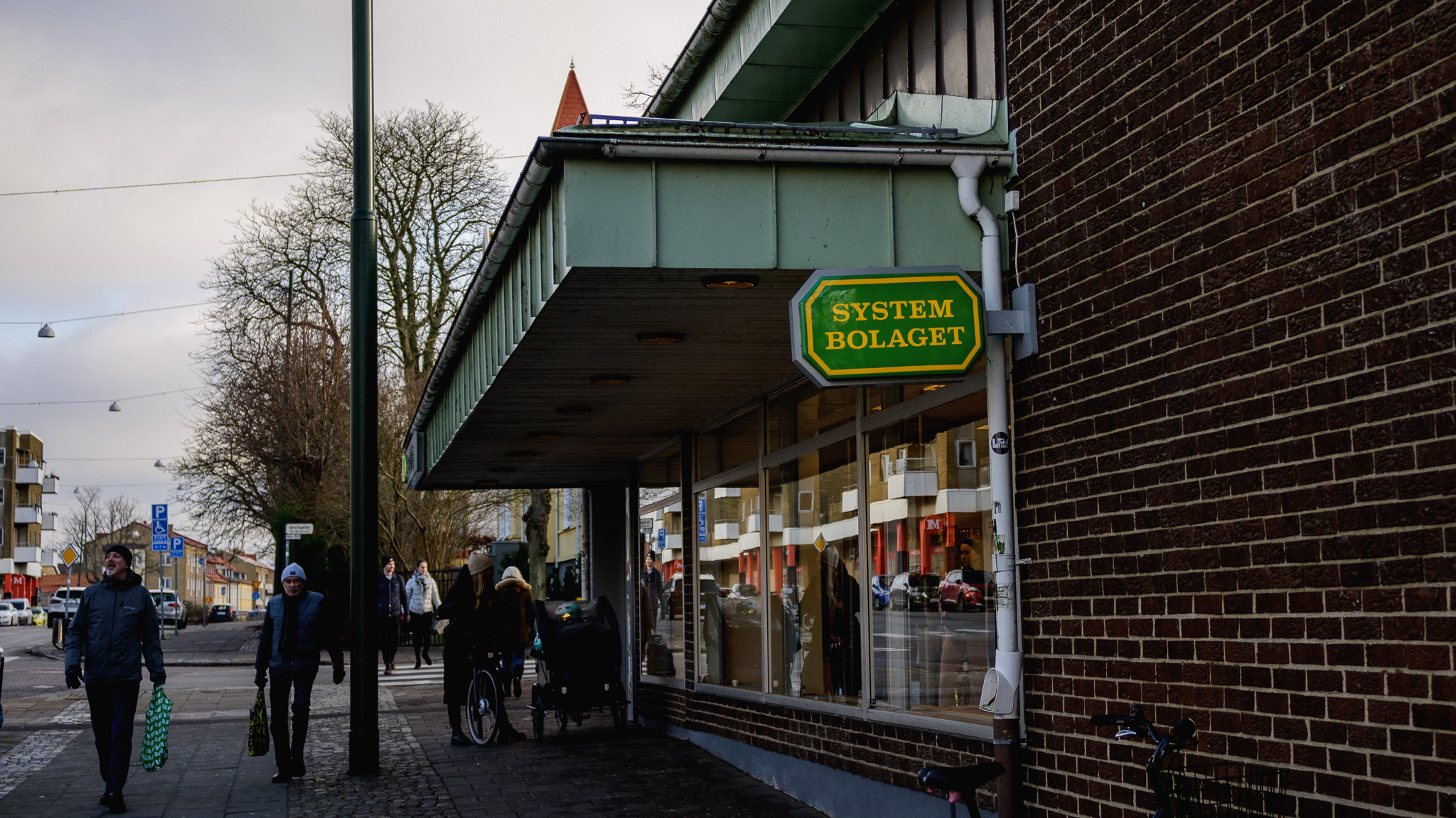Every now and then, Sweden launches a public health initiative that feels genuinely groundbreaking. This time, it’s about something that has the potential to save lives and it’s available completely free of charge for thousands of women. If you’ve heard the term HPV but never really understood what it means, or if you’ve seen people talking about a free HPV vaccination and wondered what’s going on, this post is for you.
- What is HPV and why is Sweden offering free HPV vaccination?
- How the free HPV vaccination program in Sweden works?
- Who is the free HPV vaccination for?
- What kind of vaccine is being offered?
- Why now?
- What does the process look like?
- What to expect at your free HPV vaccination appointment in Sweden
- Before the appointment
- What to bring with you
- Getting the free HPV vaccination
- After the appointment: home HPV test kit
- The second dose comes later
- What kind of research is this and why is the HPV vaccine given in two doses years apart?
- What does participation in the study involve?
- Why is this research important?
- How is the vaccination schedule structured?
- HPV vaccination in Sweden: Facts vs myths
- “Didn’t Denmark stop using the HPV vaccine because it’s dangerous?”
- “This only covers the first dose. What if the second dose isn’t free later?”
- “Sweden only tests for HPV every five years, even if you’re positive. That can’t be safe.”
- “I was already vaccinated years ago. So I can’t join, right?”
- My experience getting the free HPV vaccine in Sweden
- Where to get more information and how to book your HPV vaccine in Sweden
Whether you’re already living in Sweden or thinking about moving here, this is one of those things that makes you appreciate how seriously the country takes long-term health. Let’s walk through what HPV is, why it matters, and how you can take part in a nationwide campaign to help eliminate one of the most preventable cancers.
It’s your last call!
The free HPV vaccination initiative for women born between 1994 and 1999 ends on June 30th, 2025. This is your deadline to get your first dose. Already vaccinated? Keep reading – you might still be eligible.
What is HPV and why is Sweden offering free HPV vaccination?
HPV stands for human papillomavirus, and it’s incredibly common. Most people come into contact with it at some point in their lives, often without even realizing it. In many cases, the virus clears up on its own and doesn’t cause any problems. But certain types of HPV can lead to cervical cancer, which is one of the most common cancers affecting women.
Here in Sweden, around 530 women are diagnosed with cervical cancer every year. Even more heartbreaking – one woman dies from it every third day. The numbers are too high for a disease we can prevent.
That’s why Sweden has launched a national campaign to offer free HPV vaccinations to women born between 1994 and 1999. It’s part of a long-term goal: to become the first country in the world to eliminate cervical cancer entirely. Ambitious? Yes. But also very possible, especially with high vaccination rates.
In this post, I’ll walk you through what the vaccine program involves, who’s eligible, how it works, and I’ll answer some of the most common (and controversial) questions people asked under my video on this topic. I’ve also taken part myself, and I’ll be sharing what it was like a bit later on.
How the free HPV vaccination program in Sweden works?
Few years ago, Sweden launched a national initiative to offer free HPV vaccines to thousands of women across the country. The goal? To protect people from developing cervical cancer and move one step closer to eliminating the disease completely. Initiative ends on June 30th – that being said, it’s the last month you can vaccinate against HPV for free.
Here’s how it works.
Who is the free HPV vaccination for?
The program is targeted at anyone who:
- was born between 1994 and 1999
- has a cervix and was born with female genitalia
- is registered in Sweden, although some regions also allow participation if you’re not listed in the population register
If this applies to you, you’re invited to get vaccinated for free. It doesn’t matter if you’ve had a previous HPV infection. It also doesn’t matter if you received an older version of the vaccine years ago. You can still benefit from this updated one, which covers more strains of the virus.
What kind of vaccine is being offered?
The vaccine used in this program is called Gardasil 9. It’s one of the most advanced HPV vaccines available and offers protection against nine different types of the virus, including the ones most commonly linked to cancer.
Why now?
This campaign is part of Sweden’s larger public health strategy. The country wants to eliminate cervical cancer by 2027, and that means increasing immunity across age groups, not just vaccinating young teens, but also reaching adults who might have missed out when the vaccine was first introduced.
That’s why women born between 1994 and 1999 are now being offered the chance to catch up.
What does the process look like?
Depending on where you live, you might receive:
- A physical letter in the mail
- A message in your digital mailbox (Kivra, for example)
- Or instructions via the 1177.se health portal
In many regions, you can also book your appointment online directly, even if you haven’t received an invitation yet.
You’ll be asked to:
- Bring an ID
- Fill out a short health declaration
- Sign a consent form to participate in the research project linked to the vaccination campaign
After the vaccine, you’ll receive a home testing kit to take a cervical swab and send it in for analysis. It’s all part of a broader study that helps track HPV infections in the population. Don’t worry – full instructions are provided, and everything is free.
The second dose is offered three years later, and that one will also be covered if you take part now.
Next up: who exactly is eligible, and what if you’ve already had the shot once? Spoiler – you can still get it. Let’s clear up the common myths and questions next.
What to expect at your free HPV vaccination appointment in Sweden
So you’ve booked your time, or maybe you got a letter or digital invite and you’re thinking – okay, but what actually happens at the appointment?
No stress. It’s all very straightforward, and you’ll be in and out pretty quickly. Here’s what you can expect step by step.
Before the appointment
In most cases, you’ll either:
- Get an invitation by post
- Receive a message through your digital mailbox (like Kivra)
- Or check 1177.se and book your own appointment online
You don’t need a referral from a doctor. If you’re eligible, you can go ahead and book directly.
What to bring with you
- A valid ID card or passport
- Your invitation, if you received one
- Your consent form, which you might be asked to fill in ahead of time or at the clinic
You’ll also fill out a short health questionnaire on site – it only takes a minute or two. You don’t need to fast or prepare in any special way beforehand.
Getting the free HPV vaccination
The shot is given in your upper arm, just like a regular vaccine. It takes a few seconds and you’re done. You might be asked to stay in the waiting room for 10 to 15 minutes afterward, just to make sure you feel okay.
Most people don’t experience any side effects, maybe a little soreness where the shot was given, and that’s usually it.
After the appointment: home HPV test kit
Here’s the cool part: you’ll get a home test kit to screen for HPV. It’s a small package with everything you need to take a sample from your cervix – yes, by yourself, at home.
The kit comes with clear instructions and prepaid return packaging. You take the sample, send it back, and your results will show up later in your 1177.se inbox or come with a separate letter.

This home test is part of the larger national research project that helps Sweden track HPV infections and move toward eliminating cervical cancer. Your participation helps more than just you – it contributes to a bigger mission.
The second dose comes later
You’ll be offered a second dose of the vaccine three years after the first one. That’s part of the program too, and it will still be free if you’ve taken part now. You don’t need to remember the date on your own – you’ll be contacted again when it’s time.
What kind of research is this and why is the HPV vaccine given in two doses years apart?
When you receive the free HPV vaccine as part of Sweden’s national program, you also consent to participate in a national research study aimed at eradicating cervical cancer. This study involves monitoring the effectiveness of the vaccination program.
What does participation in the study involve?
By participating, you agree to:
- Receive the Gardasil 9 vaccine, which offers protection against nine types of HPV.
- Provide a self-collected HPV test after vaccination, which helps in monitoring the prevalence of HPV in the population.
- Allow your anonymized health data to be used for research purposes to assess the vaccine’s impact.
Your personal information remains confidential, and the data is handled in accordance with strict privacy regulations.
Why is this research important?
The study aims to:
- Evaluate the long-term effectiveness of the HPV vaccine in preventing infections.
- Monitor the prevalence of different HPV types in the population.
- Assess the overall impact of the vaccination program on public health.
This information is crucial for shaping future public health strategies and ensuring the success of the HPV eradication efforts.
How is the vaccination schedule structured?
Participants receive the first dose of the vaccine now, and a second dose is offered after three years. This schedule is part of the study’s design to evaluate the long-term immunity provided by the vaccine. Both doses are provided free of charge as part of the program.
HPV vaccination in Sweden: Facts vs myths
Whenever public health topics come up online, especially those involving vaccines, there are always a few strong opinions and a lot of confusion. After sharing about this free HPV vaccine on social media, I got a bunch of comments and questions. Some were thoughtful. Some were based on things people heard somewhere. So let’s clear things up.
“Didn’t Denmark stop using the HPV vaccine because it’s dangerous?”
No, they didn’t. This one’s been circulating online for years, but it’s simply not true. Denmark continues to vaccinate both girls and boys against HPV and is also working toward eliminating cervical cancer – just like Sweden.
There was a temporary drop in vaccination rates in Denmark around 2015 because of public concern, but it wasn’t due to scientific evidence. Since then, new studies, education campaigns, and transparent research helped rebuild trust. Today, Denmark is one of the countries with the highest HPV vaccination rates in the world.
“This only covers the first dose. What if the second dose isn’t free later?”
Good question but no need to worry. The current program includes both doses, even though they’re given years apart.
You get your first dose now, and the second one will be offered to you in about three years. It’s still part of the same initiative and will be free when the time comes. You don’t need to pay later. You also won’t have to keep track yourself – you’ll be reminded when it’s time.
“Sweden only tests for HPV every five years, even if you’re positive. That can’t be safe.”
This one’s a bit more nuanced. In Sweden, people with no signs of HPV are usually tested every five years as part of the national screening program. But if your test shows you have a high-risk HPV infection, your follow-up schedule changes.
You’ll either be asked to:
- Come in earlier for another test
- Or be referred directly to a doctor for further examination
So no – if something concerning shows up, they don’t wait five years. The system is designed to monitor and act when needed.
“I was already vaccinated years ago. So I can’t join, right?”
Actually, you can.
Many people received earlier versions of the HPV vaccine that only covered two or four types of the virus. The one being offered now – Gardasil 9 – protects against nine types, including the most dangerous ones.
So even if you were vaccinated as a teen, this updated version can offer you broader and longer-lasting protection. And yes, it’s still free if you meet the age and health criteria.
My experience getting the free HPV vaccine in Sweden
When I first heard about Sweden’s plan to eliminate cervical cancer through offering free HPV vaccination, I didn’t have to think twice. I booked my appointment, got the shot and I’m so glad I did.
This was two years ago, not long after the program officially launched. I remember being curious, a bit nervous, and very determined to take part.
Here’s how it went for me:
I started by contacting 1177, the national health platform. They directed me to the nearest barnmorskemottagning (midwife clinic), where I could get vaccinated. It was all very simple. I called them, got my time booked, and shortly after, received a confirmation.
On the day of the vaccination, everything moved fast. Before the appointment, I was asked to fill out a health declaration. It was quick and done entirely online. I just scanned a QR code and answered a few questions. The nurse was kind, the shot itself was barely noticeable, and the whole visit took maybe 15 minutes. Just like that, I was done.
But the process didn’t end there.
I had already received a home HPV test kit by mail a few days earlier, so the same day I got the vaccine, I completed the test at home. It involved collecting a sample using a simple swab (with clear instructions) and mailing it in using the prepaid envelope provided.
If I hadn’t had the kit at home, the midwife would’ve given me one on the spot, so no worries either way.
In the next 48 hours, I did feel a few mild side effects. My arm was sore, especially when I lifted it, and I had a slight fever in the evening. But nothing alarming. These are common reactions to many vaccines, not just this one, and they passed quickly.
Where to get more information and how to book your HPV vaccine in Sweden
If you’re thinking, “This sounds important. I want to do it too” – that’s amazing. Booking your appointment is easier than you might think, and there’s plenty of official info to guide you.
Step 1: Check if you’re eligible for free HPV vaccination
If you are a women born between 1994 and 1999 and have a cervix, you’re most likely eligible. It doesn’t matter if:
- you’ve already had HPV
- you were vaccinated years ago
- you didn’t receive a letter in the mail
Still unsure? You can always contact your regional healthcare provider to double-check. The easiest place to start is 1177.
Step 2: Visit the 1177.se website
1177 is Sweden’s official health portal. Go to 1177.se and look for details about the HPV vaccination program. The information is available in Swedish.
Some areas let you book directly online, while others will ask you to call your local barnmorskemottagning (midwife clinic). Either way, it’s simple and free.
Step 3: Book your appointment for free HPV vaccination
Once you know where to go, make the call or use the online booking system. If you haven’t received a home test kit yet, you’ll get one at the clinic.
And that’s it – you’re on your way to protecting yourself and contributing to one of the most powerful public health projects happening right now in Sweden.
Thanks for reading this post and taking the time to learn about something that doesn’t always get enough attention. If you have questions or want to share your own experience, feel free to leave a comment or send me a message. Let’s make sure this information reaches as many people as possible.
Because taking care of our health is never just a personal act – it’s something that can change lives on a much bigger scale.











![COVID-19 in Sweden - the latest restrictions [January 2023] 22 Szwecja scaled 1 - Your Ultimate Guide to Sweden - LikeSweden.com - COVID-19 in Sweden - the latest restrictions [January 2023]](https://likesweden.com/wp-content/uploads/2022/02/Szwecja-scaled-1.jpg)



